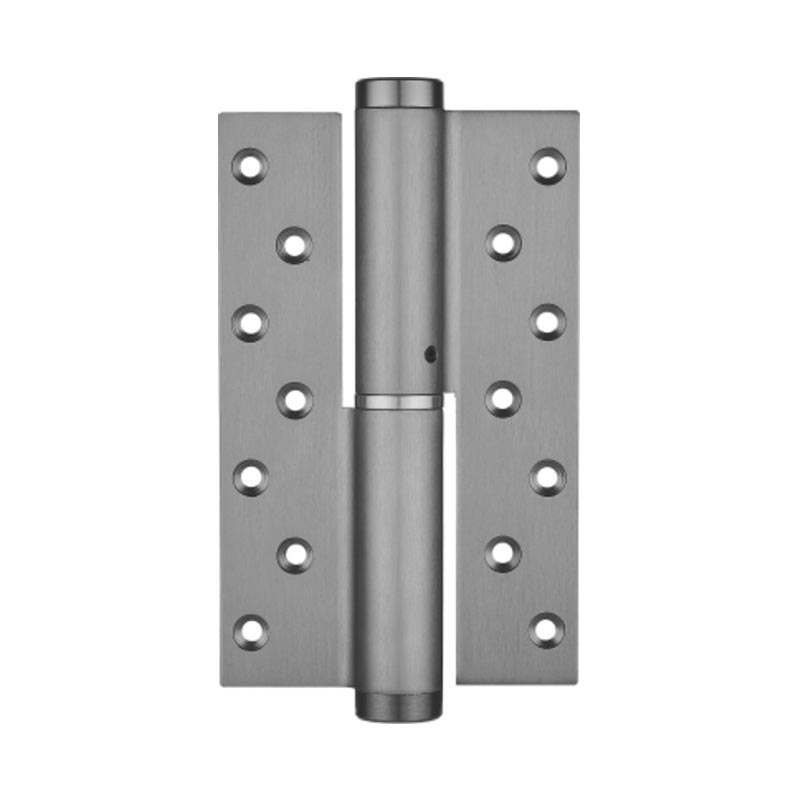Reliable Operation Over Time
When selecting hardware for cabinets, doors, or industrial enclosures, durability and stability are among the critical factors. Damping spring hinges, known for their smooth motion and controlled closing mechanisms, are often chosen for their quiet function and modern design. However, beyond aesthetics and convenience, how do these hinges perform over extended periods of use? This article explores the structural resilience and operational stability of damping spring hinges, especially under frequent use and various environmental conditions.

Built with Wear-Resistant Materials
The long-term durability of damping spring hinges begins with the materials used in their construction. High-end models are typically manufactured from corrosion-resistant metals such as stainless steel or zinc alloys, ensuring the hinges can withstand humidity, temperature changes, and daily wear without degrading. Additionally, the internal damping components—often made from silicone or other high-performance polymers—are engineered to retain their viscosity and effectiveness for years. These carefully selected materials form the backbone of the hinge’s lasting performance, even under heavy or frequent use.
Tested for Tens of Thousands of Cycles
Manufacturers of quality damping spring hinges routinely subject their products to cycle testing during development. These tests simulate tens of thousands of open-close movements to evaluate how the hinge performs over time. Well-designed models show consistent resistance and soft-closing motion even after 50,000 or more operations, making them suitable for high-traffic applications in kitchens, hospitals, office furniture, or commercial cabinetry. This level of durability ensures that users can rely on the hinges to perform smoothly for many years without mechanical failure.
Stable Damping Performance Under Varying Conditions
A major benefit of damping spring hinges is their ability to maintain a consistent closing speed, regardless of changes in ambient temperature or humidity. Inferior damping systems may stiffen in cold conditions or become too loose in heat, but high-quality hinges incorporate fluid damping or air-resistance systems that are engineered for thermal stability. This means that whether installed in a warm commercial kitchen or a cool storage area, the damping function will continue to operate as intended. The result is long-term functional consistency without the need for frequent adjustment or maintenance.
Resistance to Loosening or Malalignment
Another key component of stability is the hinge's ability to hold its position and alignment. Over time, repeated mechanical movement can cause traditional hinges to become loose, causing sagging doors or misaligned panels. Damping spring hinges are designed to maintain structural alignment through reinforced hinge arms and precision engineering. Some models even include built-in self-adjusting features that compensate for wear, helping the hinge remain tight and correctly aligned over time. This makes them particularly useful in cabinetry or doors that are opened and closed dozens of times daily.
Minimal Maintenance Requirements
Thanks to their high-quality construction and internal self-regulating mechanisms, damping spring hinges typically require very little maintenance. There is no need for regular lubrication or adjustment, and models are sealed to prevent dust and moisture from interfering with the internal damping systems. For homeowners, facility managers, and manufacturers alike, this low-maintenance profile adds value by reducing time and cost over the product’s lifespan.
Conclusion
Damping spring hinges stand out not only for their soft-closing function but also for their good durability and long-term stability. From the use of premium materials to advanced engineering that resists wear, loosening, and environmental effects, these hinges are built to last. In both residential and commercial settings, they provide dependable performance with minimal upkeep, making them a smart investment for any application requiring high-function, low-noise door or cabinet movement.